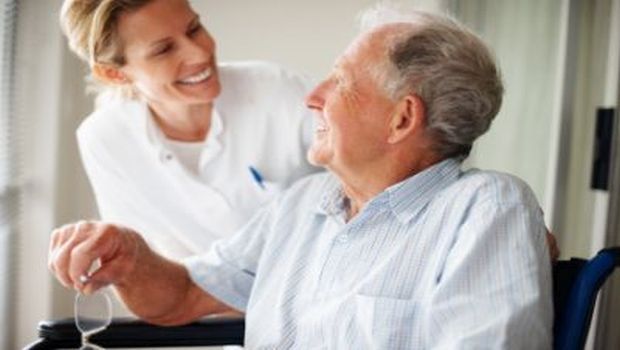High Rates of MRSA Transmission Found Between Nursing Home Residents and Healthcare Workers

Healthcare workers frequently contaminate their gloves and gowns during every day care of nursing home residents with methicillin-resistant Staphylococcus aureus (MRSA), according to a new study. The findings were published online today in Infection Control & Hospital Epidemiology.
“One in four nursing home residents harbor MRSA in some settings. We know that healthcare workers serve as a vector for MRSA transmission from one resident to another in settings such as nursing homes,” says Mary-Claire Roghmann, MD, lead author of the study. “The use of barrier precautions, such as gowns and gloves, limit this transmission, but guidance on when to use them is limited. The goal of our research was to determine the most important times to wear gowns and gloves in nursing homes by measuring the risk of MRSA contamination during different types of care.”
Researchers conducted a prospective observational study at 13 community-based nursing homes in Maryland and Michigan, evaluating 403 residents for MRSA colonization and then assessing whether interactions with healthcare workers lead to contamination of their gowns and gloves by MRSA bacteria. The study found 28 percent of residents (113 out of 403) harbored MRSA. Glove contamination was higher than gown contamination (24 percent vs. 14 percent) reinforcing the importance of hand hygiene between residents to prevent transmission of MRSA.
High-risk activities linked to glove or gown contamination included dressing residents, transferring residents, providing hygiene such as brushing teeth or combing hair, and changing linens and diapers. Healthcare workers do not wear gowns during much of this care because they don’t anticipate that their clothing will come into contact with body secretions during this care.
“This research is particularly important since residents in these communities require a lot of assistance from their healthcare workers. New MRSA acquisition in nursing homes is substantial. Our study, for the first time, defines the type of care that increases the risk of transmission and suggests modifications to the current indications of gown and glove use,” says Roghmann.
Reference: Roghmann MC, Johnson JK, et al. Transmission of MRSA to Healthcare Personnel Gowns and Gloves during Care of Nursing Home Residents. Infection Control & Hospital Epidemiology online. May 26, 2015.
Source: Society for Healthcare Epidemiology of America (SHEA)
From Shortages to Security: How Reusable Health Care Textiles Can Transform Infection Prevention
March 7th 2025Reusable health care textiles enhance infection prevention, reduce waste, and strengthen supply chains. Hygienically clean textiles offer a sustainable, cost-effective alternative to disposable PPE, ensuring patient safety and environmental responsibility.
Prove Your Expertise: The Value of AL-CIP Certification in Infection Prevention
February 24th 2025The Advanced Leadership Certification in Infection Prevention (AL-CIP) validates leadership, expertise, and strategic decision-making in infection control. Learn why top professionals pursue this certification and how it enhances careers, and apply for yours today!